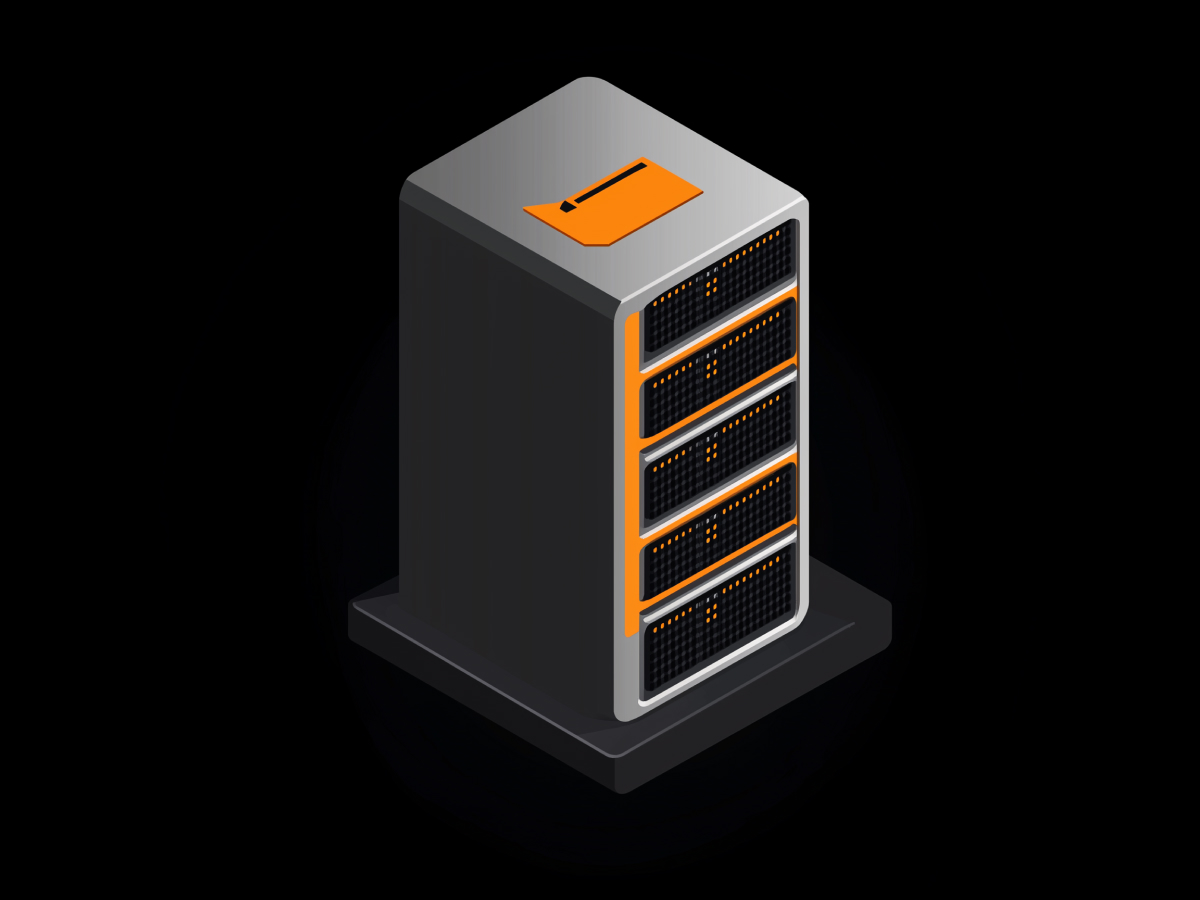With 83% of companies reporting that switching to a headless CMS improved time, budget, productivity, meeting KPIs, and increased revenue, there has never been a better time to make the change. As of 2022, 57% of organizations said they plan to switch in the next two years in order to access the unparalleled speed, flexibility and control available through the separated frontend and backend of a headless CMS.
Adopting Headless CMS isn’t about keeping up; it’s about getting ahead of the competition. These groundbreaking systems offer a competitive edge through enhancements to website speed and performance, directly leading to increased customer success, conversion and ROI, with 14.2% of companies reporting an ROI increase after migration to headless CMS. A faster, more pleasant UX directly increases customer attraction and engagement with 16.8% of companies reporting an increase in traffic after migration.
Overcoming restrictions of the past: Why headless CMS is the way to go
In the past, traditional CMS caused significant creative restrictions including limited design options, reduced site speed, inferior customer experience, and more. These older systems tied the frontend and backend together, making it hard to customize your online store without affecting the core functionality.
Headless CMS addresses all of this by separating the frontend from the backend through a decoupled architecture so organizations have the creative freedom to design sites as they see fit, without unnecessary compromises. The plug-and-play nature of Headless CMS fosters easy integration with third-party apps and services, adding operational agility.
Headless CMS is becoming the go-to choice in eCommerce
With 57% of leaders from all business sizes saying that they plan to implement headless in the next two years, these pivotal systems are very clearly a progressive choice for those looking to excel in modern eCommerce. Some invaluable factors that must be considered are:
Unrivaled speed
In eCommerce, a slow website is a deal-breaker. With 40% of visitors leaving a website that takes more than 3 seconds to load and 64% of those dissatisfied customers avoiding the website in future, speed is absolutely vital. Headless CMS directly address these issues by allowing for quicker content delivery through its decoupled architecture. As the frontend, the aspect the customer interacts with, loads quickly, user satisfaction is greatly ameliorated and cart abandonment is reduced.
Exceptional user experience
A tailored user experience actively boosts customer purchases and retention clearly demonstrated in a study from Forrester that found that an improved UI can increase conversion rates by 200% and a well constructed, tailored UX can lead to conversion rate increases of up to 400%. Organizations can leverage Headless CMS to customize user interfaces without affecting the core data and functionalities and reap the benefits of the enhanced conversion rates to the best of their ability.
Cost-effectiveness
While adopting a Headless CMS requires an initial investment, the long-term ROI can be significant. The scalable architecture means organizations can add features or expand operations without a complete system overhaul, saving both time and money in the long run.
“13.7% reported a budget reduction for their content management system maintenance after migration to a headless solution.”
SEO
Visibility on search engines is crucial for any online business. Headless CMS directly facilitates better SEO through its impressive speed, performance and the ease of implementing on-page SEO elements like meta tags and headers,
Mobile responsiveness
Increasing use of mobile devices for shopping, with eCommerce sales from mobile devices contributing for a little over 58% of all online sales in Q1 of 2023, means having an optimized mobile site is essential. Headless CMS enhance mobile responsiveness by facilitating the building of mobile-specific frontend experiences without affecting the backend.
Business Agility
Being agile and adaptable is key in today’s fast-paced business environment, clearly demonstrated by agile organizations being more than twice as likely as the average, inflexible, organization to achieve top-quartile financial performance (55 percent versus 25 percent) and agile firms growing revenue 37% faster and generating 30% higher profits than non-agile companies. Headless CMS improve business agility by offering high level development control and the flexibility to integrate new technologies without complete system overhauls, letting organizations optimize the eCommerce performance.
“77% of organizations with headless architecture say it enables faster changes to storefronts”
The true cost of being left behind
The cost of staying behind with a traditional CMS goes beyond just financial investment. Outdated CMS lead to missed opportunities for innovation, reduced agility, and limitations on growth. Adopting a Headless CMS can mitigate these risks, offering a more flexible, scalable, and cost-effective solution that meets the demands of today’s fast-paced eCommerce landscape.
Staying with a traditional CMS has significant drawbacks, especially when it comes to long-term financial and operational planning. One of the most glaring issues is the cost associated with maintaining and updating monolithic platforms. These systems often require extensive resources for even minor updates, not to mention the challenges of integrating new technologies or third-party services.
Reducing costs with Headless CMS Heading here
Headless CMS addresses the financial concerns of sticking with a traditional system by offering a more modular and scalable solution This is perfectly illustrated by 13.7% reported a budget reduction for their content management system maintenance after migration to a headless solution. Consider a retail business that wants to integrate a new AI-powered chatbot to improve customer service. With a traditional CMS, this could require a lengthy and expensive development cycle to ensure compatibility. With a Headless CMS, the API-first approach accommodates quick and straightforward integration of new technology, not only reducing the time and cost associated with implementing new features but also meaning platforms remain cutting-edge without the need for a complete overhaul.
“The cost of staying behind with a traditional CMS goes beyond just financial investment.”
Long-term freedom away from Vendor lock-in with headless CMS
Organizations need to consider vendor lock-in when weighing up traditional CMS vs. headless CMS for their eCommerce site. Vendor lock-in stifles innovation and limits the ability to adapt to new market conditions and is worsened by traditional CMS. Let’s say an organization is locked into a CMS that doesn’t support mobile optimization at a time when mobile shopping is skyrocketing. Being stuck with a system that can’t meet current consumer demands will lead to a significant rise in cart abandonment and a drop in customer traffic. Migrating to a new platform would be both costly and time-consuming. With a Headless CMS, especially open-source options, organizations have the freedom to choose services and tools that meet their specific needs, such as a service with exceptional mobile first optimization.
Considering Headless CMS? Start with these questions
The decision to switch to a Headless CMS should be based on a comprehensive evaluation of your current system’s limitations, the benefits of making the switch, and the risks involved.
Understanding your own requirements
Start by evaluating your current system’s performance. Is it meeting your speed and scalability requirements? Are you able to integrate new technologies or third-party services easily? How much are you spending on maintaining and updating your existing platform? These questions will give you a baseline understanding of whether your current system is hindering your growth or costing you more in the long run.
Evaluate the risks before making the switch
Before making any significant change, it’s crucial to assess the associated risks. This includes the financial investment required for migration, the time it will take, and the potential for operational disruptions during the transition. Weigh these risks against the benefits, such as increased speed, scalability, and flexibility, to make an informed decision.
What will you lose by not switching?
It’s essential to consider the opportunity cost of not making the switch to headless CMS. Staying with an outdated system could mean missing out on new technologies that would drive business growth. You might also be sacrificing potential improvements in speed, customer experience, and operational efficiency, which will put you at a competitive disadvantage.
Future-proofing your business
An additional consideration is how well your current system is positioned for future growth and technological advancements. A Headless CMS is generally more adaptable and can more easily accommodate emerging technologies, making it a more future-proof choice.
Key Takeaways
Headless CMS is more than just a trend; it’s an axiomatic shift in eCommerce businesses operation. Organizations that switch report significant improvements in key performance indicators, making it a strategic choice for those looking to excel in today’s competitive landscape. Some key points that cannot be overstated include:
- Enhanced Website Speed: Directly improves user satisfaction and reduces cart abandonment.
- Exceptional User Experience: Allows customization without affecting core functionalities, leading to higher customer retention.
- Operational Agility: Offers high development control and quick integration of third-party services.
- Cost-Effectiveness: Scalable and flexible architecture reduces long-term costs.
- SEO and Mobile Responsiveness: Improves visibility and user experience across devices.
- Vendor Freedom: Avoids vendor lock-in, offering flexibility in choosing services and tools.
The decision to switch to a Headless CMS should be well-considered, factoring in your current system’s limitations, the financial and operational risks of migration, and the long-term benefits. In a rapidly evolving eCommerce world, the cost of inaction could be significant, making Headless CMS a tool that deserves serious consideration for future-proofing your business.





